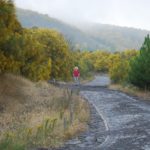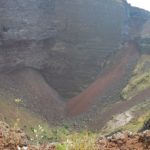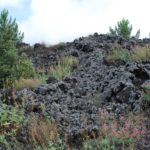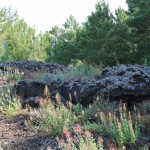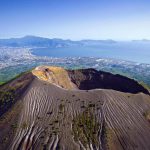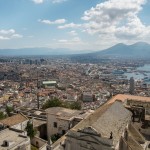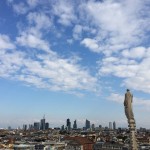Active tourism in the Mount Vesuvius National Park
Naples: on the top of Vesuvius
Amazing trekking inside the natural reserve of the Volcano
Amazing trekking inside the natural reserve on the slopes of Vesuvius, walking up to the crater on top. The crater has changed appearance, shape and size with every eruption: Vesuvius is currently going through a period of dynamic rest, but it is an active volcano.
It’s one of the most visited places in the world and at least 600 thousand people visit it every year, even if is it one of the most explosive volcanoes ever. The natural park all around is a miracle: 8,500 hectares of extraordinary biodiversity. The volcano cyclically destroys all the flora and fauna settling here, but immediately after, nature very gradually begins taking possession of the lava and the environment. Such a powerful balance to preserve!
- On the way to the Top
- Inside the Volcano
- Nature struggling against the lava
Video full text: Vesuvius
I’m on the slopes of Vesuvius and this is where the natural reserve begins.
It coincides with the start of the Natural Park of Vesuvius.
The volcano is a haughty and contemptuous divinity.
It makes an appearance when it feels like it. It’s there covered by the clouds.
There’s a thunderstorm now, but if the sun comes out for five minutes, we’ll make the most of it.
Have a look at the mouth of Vesuvius.
This is the crater!
With every eruption it has changed appearance, shape and size.
This is result of the last eruption.
That sound is not the volcano about to erupt, it’s thunder.
We are close to the gods up here, there are thunderstorms, flashes of lightings and thunderbolts.
Vesuvius is currently going through a period of dynamic rest, but it is an active volcano.
However, there we can see there a plug.
A lot of material has collapsed into the crater from the upper part.
The depth is now 330 metres.
That’s because a volcano never stays still, it changes.
Its current appearance is as a result of the last eruption in 1944.
This is an image that gives you some idea of what the volcano looked like before.
Today we see two summits, but before 79 A.D. there was just one mountain and one summit.
It’s beautiful, reassuring even – it looks like a natural amphitheatre.
You can see the plug there, its thick and it seems to be holding.
It’s an idyll! But can we rest easy?
Relatively, there are least 700 thousand people living here.
Without taking into account the thousands of tourists who visit.
It’s one of the most visited places in the world.
Now, at least 600 thousand people visit Vesuvius every year.
We are looking at one of the most explosive volcanoes in the world.
We know full well that a stratovolcano is highly explosive.
This is the photo of the last eruption in 1944.There on the lava is Amelia, who we couldn’t do without.
In reality her name is Paola, the park’s naturalist.
What can you tell me about this place?
This park is a miracle. Its 8,500 hectares contain an extraordinary biodiversity.
Above all if we consider that this is an active volcano.
One that cyclically destroys the vegetative and animal communities that subsequently settle there.
Immediately after, nature very gradually begins taking possession of the lava and the environment.
It’s a huge sensation.
These delicate balances are worth preserving and protecting.
The really shallow question is: why protect nature? What purpose does it serve?
What purpose do we serve? We are the fruit of nature.
We are part of the ecosystems we colonise.
We transform them and are ourselves transformed.
Even if we believe that we govern environmental transformations,
it is the environment that transforms us. We truly are small fry.
Visit Naples: helpful hints
Italian name: Napoli
Arrival
Naples has its own international airport, connected to the city centre by a bus (it takes 15 minutes and it costs 5€). For transcontinental flights you have to stop in other airports, Rome is the closest one.
Transports
In Naples you find both buses, subways and funicular. The ticket is the same for all the transports and it costs 1,5€. For more information check the ANM website. If you prefer to visit the city on foot, here you can find an idea for you tour.
What to do
Naples is the capital city of Campania region, in Southern Italy. Naples is on a beautiful Gulf, extended from the Sorrento Peninsula to the volcaninc area called Phlegrean Fields, on the background the huge Vesuvius, one of the two active volcanoes in Italy. In the Gulf, three famous islands – Capri, Ischia and Procida. The historical centre of Naples is listed as a UNESCO World Heritage Site since 1995, the most important monuments are the Dome, Palazzo Reale and the Maschio Angioino.
Speaking of food, Naples is the city where Pizza is born!
Where to sleep
The best place to sleep in Naples is of course the city centre. Other very good alternatives are Posilippo and Vomero area, the harbor and the University area, the boardwalk and the more expensive Chiaia area.

